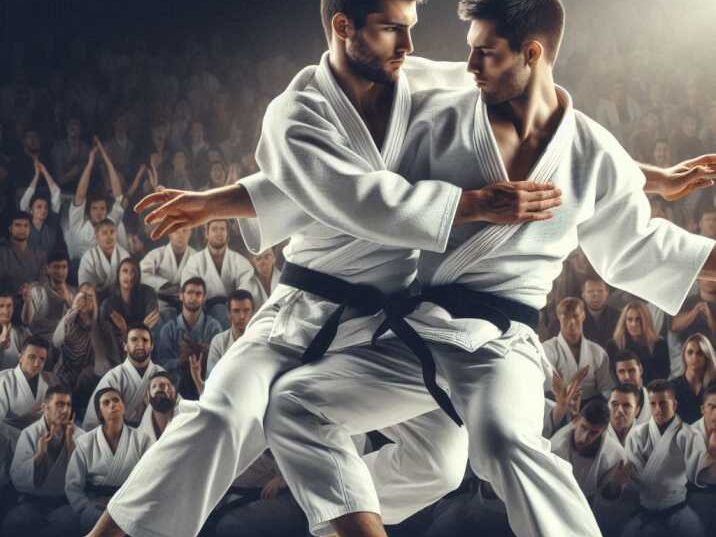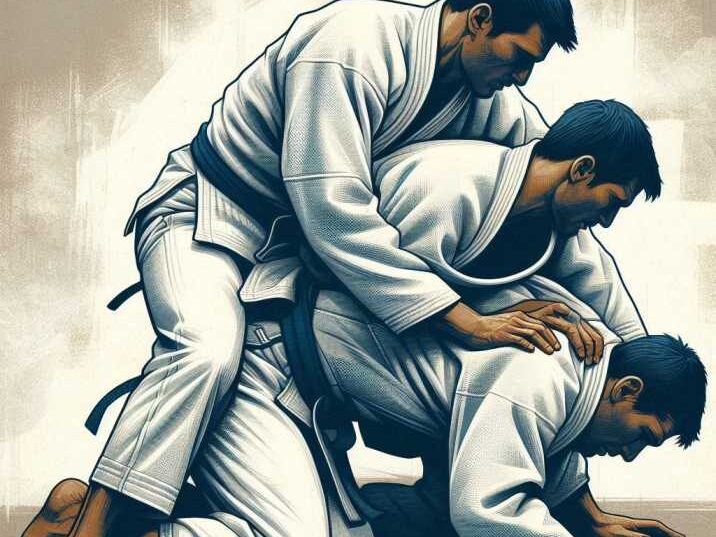Introduction:
Table of Contents
Judo is a popular martial art that teaches balance, strength, and mental focus. It involves using throws, pins, and submissions to overcome opponents. While most people think of Judo as one fighting style, there are actually different ways to practice it. Each Judo fighting style has its own techniques, strategies, and purposes. In this article, we will explore the different Judo fighting styles to help you understand the exciting variety of techniques used in this martial art. Let’s dive in and discover how Judo can be practised in many exciting ways.

Understanding Judo: The Basics
Before we get into the specific fighting styles, let’s quickly go over what Judo is and why it’s such a popular martial art.
Judo, which means “gentle way,” was developed in Japan by Dr. Jigoro Kano in 1882. The goal of Judo is not to harm your opponent but to skillfully use their movements against them. This makes it perfect for anyone to practice, regardless of size or strength. Judo focuses on throws, grappling, and submissions—where fighters attempt to pin or immobilize their opponents. Unlike some martial arts that rely on strikes like punching or kicking, Judo is a more technical, strategic art that teaches how to use leverage and balance to win.
The Different Judo Fighting Styles
Judo has many styles that focus on different aspects of the martial art. Each offers unique techniques and philosophies. Below are 10 key Judo fighting styles explained:
1. Traditional Kodokan Judo
Kodokan Judo is the original style created by Dr. Jigoro Kano in 1882. It focuses on throws, pins, and submissions to control or immobilize an opponent. The core principles of Kodokan Judo are discipline, respect, and efficiency, making it a well-rounded martial art. Practitioners learn techniques like the shoulder throw (ippon seoi nage) and various hold-downs. This traditional style is the most widely practised form of Judo across the globe.
2. Sport Judo
Sport Judo emphasizes competition, which aims to score points by successfully executing throws, pins, or submissions. This style’s speed, strategy, and agility are crucial as fighters compete under strict rules. Points are awarded based on how well the techniques are performed. Sport Judo is an Olympic sport popular in various national and international tournaments. This style highlights the athletic and competitive side of Judo.
3. Kosen Judo
Kosen Judo is known for its focus on groundwork, or “ne-waza.” It teaches techniques such as grappling and submissions, where fighters aim to control their opponent on the ground. This style is instrumental when fights go beyond throws and require ground control. Many techniques in Brazilian Jiu-Jitsu have roots in Kosen Judo, and it remains a favourite among practitioners who enjoy grappling and submissions.

4. Goshin Jutsu
Goshin Jutsu is a self-defence style of Judo that trains students to protect themselves from various real-life attacks. It incorporates techniques to defend against strikes like punches, kicks, or even weapons. This style of Judo is practical for street defence and teaches quick, effective ways to neutralize threats. Goshin Jutsu is ideal for those looking to learn Judo for personal protection.
5. Mifune Judo
Named after Kyuzo Mifune, a legendary Judo master, Mifune Judo emphasizes fluidity, technique, and using an opponent’s strength against them. It focuses on subtle movements and balance, allowing the practitioner to control the fight with minimal effort. This style is often seen as the most graceful form of Judo, where skill and timing are more important than raw power. It showcases the artistry of Judo in its most refined form.
6. Combat Judo
Combat Judo is designed for military and real-life combat situations. This style focuses on quick, efficient techniques that neutralize opponents quickly. It often involves strikes, throws, and submissions that can be used in dangerous or life-threatening scenarios. Law enforcement and military personnel frequently train in Combat Judo to enhance their close-quarters combat skills. It’s a no-nonsense style built for effectiveness.
7. Freestyle Judo
Freestyle Judo combines elements from Sport Judo and Kosen Judo, allowing for a broader range of techniques, including more ground fighting. Fighters can transition between standing techniques and groundwork more fluidly, making it a versatile and exciting style to practice. This style is perfect for those who enjoy throwing and grappling, as it blends various Judo skills into a more dynamic form of fighting.
8. Shiai Judo
Shiai Judo is primarily competitive, focusing on winning matches through proper execution of techniques. Points are awarded for clean throws, effective pins, and successful submissions. It’s often practised in tournaments, with strict rules ensuring fairness and safety. Practitioners of Shiai Judo focus on mastering the fundamentals of Judo while developing their speed and competitive edge. This style is perfect for those looking to test their skills in a competitive environment.
9. Sambo (Russian Judo)
Sambo is a martial art that combines Judo with wrestling techniques. Developed in Russia, it focuses on quick throws, ground control, and submissions. Though not purely Judo, Sambo is heavily influenced by Judo principles and techniques. It’s known for its fast pace and aggressive style, making it a favourite in combat sports competitions. Practitioners of Sambo excel at both takedowns and groundwork.
10. Adaptive Judo
Adaptive Judo is designed for people with physical or mental disabilities, making the martial art accessible to everyone. This style modifies traditional Judo techniques to suit the abilities of each individual, ensuring that everyone can participate in and benefit from Judo training. Adaptive Judo promotes inclusivity while teaching the core values of discipline, respect, and technique. It’s a fantastic way to open Judo to people of all abilities.
Comparing Different Judo Styles (Table)
| Style | Focus | Specialty | Difficulty Level |
|---|---|---|---|
| Kodokan Judo | Traditional Techniques | Throws, pins, and submissions | Medium |
| Sport Judo | Competitive Judo | Scoring points in matches | Medium |
| Kosen Judo | Groundwork (Ne-Waza) | Grappling and submissions | High |
| Goshin Jutsu | Self-Defense | Defending against strikes and weapons | Medium |
| Mifune Judo | Fluid Techniques | Using opponent’s strength | High |
| Combat Judo | Real-Life Combat | Quick, powerful takedowns | High |
| Freestyle Judo | Mixed Techniques | Throws and groundwork | Medium |
| Shiai Judo | Tournament Style | Competitive matches | Medium |
| Sambo (Russian Judo) | Wrestling & Judo Combo | Throws and submissions | High |
| Adaptive Judo | Accessibility | Techniques for all abilities | Low to Medium |
Critical Benefits of Practicing Judo
1. Physical Strength
Practicing Judo helps to build muscular strength and endurance. The various throws, grappling techniques, and groundwork exercises work out different muscle groups, making your body more robust and toned. Judo also improves flexibility as practitioners must stretch and move in a wide range of motions. Over time, it enhances overall physical fitness, benefiting competitive athletes and recreational practitioners.
2. Mental Focus
Judo teaches discipline and requires mental focus to master the techniques. During training, practitioners must stay present and aware of their body movements and their opponent’s opponent’s focus, which translates into better daily concentration. The mental toughness built through Judo helps students remain calm under pressure and manage stress effectively.
3. Confidence
Judo helps boost self-confidence through consistent practice as students learn to trust their abilities. As they master more techniques and earn higher ranks, their self-esteem grows. Additionally, knowing how to defend oneself effectively instils a sense of security, which can help a person feel more confident in various situations outside the dojo.
4. Self-Defense
Judo is an excellent form of self-defence. It teaches practical techniques that allow you to control or subdue an opponent using their momentum against them. Judo equips practitioners with skills that can be applied in real-world situations through throws, pins, or submissions. Its emphasis on technique over strength makes it a practical martial art for people of all sizes.
5. Respect
One of the core values of Judo is respect for others, the dojo, and the martial art itself. Practitioners are taught to treat their training partners and instructors courteously and humbly. Bowing before and after matches, showing gratitude for lessons learned, and understanding the importance of sportsmanship is central to the practice of Judo, promoting mutual respect both on and off the mat.
Conclusion:
Judo is more than just a single fighting style. From the traditional techniques of Kodokan Judo to the intense grappling of Kosen Judo and the competitive nature of Sport Judo, there’s a style for everyone you’re interested in self-deyou’re competition, or simply staying fit, the different Judo fighting styles offer something for every student. By practising Judo, you improve your physical strength and gain valuable life skills like discipline, respect, and confidence.
FAQs About Judo Fighting Styles
- What is the most popular Judo style?
The most popular Judo style is Kodokan Judo, the original form created by Jigoro Kano. - Can children practice Judo?
Judo is excellent for kids because it teaches discipline, respect, and self-control. - Is Judo effective for self-defence?
Judo, especially Goshin Jutsu, is effective for self-defence as it teaches practical techniques to protect oneself. - What is the difference between Sport Judo and Freestyle Judo?
Sport Judo focuses on scoring points in matches, while Freestyle Judo allows for a broader range of techniques, including ground fighting. - Can People with disabilities practice judo?
Adaptive Judo is designed to be inclusive, allowing people with disabilities to practice Judo.


